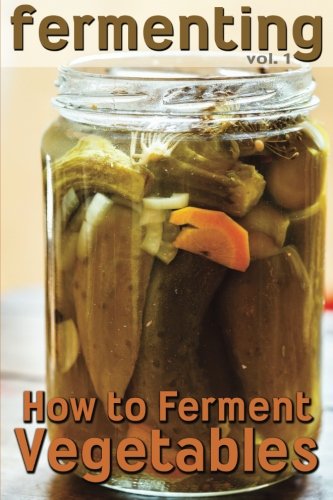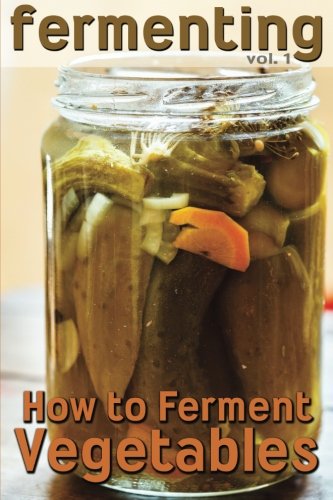Description
How to Ferment Vegetables? - Instruction book for all fermentation beginners
Book by Rashelle Johnson
What it’s about.
This handy little book covers the basics of vegetable fermentation. In addition to explaining the huge health benefits of pickling and fermenting vegetables over freezing, canning or just picking them off the store shelf, this book offers a solid selection of great recipes for widely popular pickled and fermented delicacies.
Who is it for?
This book is just perfect for the fermentation beginners. If you are new to the amazing world of naturally preserved veggies, this book will provide you with just enough basic knowledge to make you want to dig deeper and find out more. It will also give you practical and not too complex instructions how to prepare your first healthy delicacies, without scaring you away with unnecessary info, too exotic dishes or overly complex preparation procedures. Consider is as the perfect starting point if you are a fermentation food novice.
The Contents - How to Ferment Vegetables?
The author made a great selection of just the right recipes to get you started. Simple, yet delicious recipes for popular foods. They come complete with instructions on how to shred, slice and otherwise prepare your vegetables. Every recipe also covers the basic tools and utensils you will need for a successful batch, such as crocks/crock pots (we recommend starting with a 5-liter crock before moving onto the larger ones) and slicers and graters (beginners might want to start with something more universal - like the medium shredder or smaller compact cabbage shredder or even a V-shaped mandolin , before they get a serious collection of cabbage slicers in all sizes and varieties).Finally, and this is maybe the most useful part of the book – it ends with a FAQ section, which covers all of the issues that might come up during fermentation. It is especially handy for beginners, as they will find the answers to all of their questions and concerns, such as the appearance of mold or other suspicious-looking things on the surface of their brine – and ready solutions for all of them!
The selection of recipes is just perfect for getting started:
- Sauerkraut recipes (there are six different sauerkraut recipes, and you can also check out this helpful blog post about sauerkraut )
- Coleslaw
- Coleslaw’s less popular, but equally tasty cousin - Kale slaw
- Horseradish salad
- Cultured beets
- Beet kvass
- Pickled jalapenos (just like the ones you use on nachos, only healthier!)
- Kohlrabi
- Dilly carrots
- Fermented pickles
- Zucchini pickles
- Cultured olives
- Probiotic garlic
Conclusion - Final Words
The best part of this book is readability. All of the instructions are simple and concise.The Q&A part at the end of the book alone is a fantastic aid for all beginners. Rashelle Johnson ( author) made sure they get all the necessary encouragement and practical advice on how to ferment vegetables. In the FAQ section, she addressed all imaginable (and perfectly normal) occurrences such as mold, yeast foam etc. that might seem suspicious and trouble inexperienced DIY fermentation enthusiasts. She offered practical and safe solutions for all of those pesky issues, which could otherwise be quite discouraging.
The book also offers an optimal choice of recipes – ranging from such fermentation classics as sauerkraut and coleslaw – all the way to healthy and yummy homemade alternatives to the store-bought ketchup and salsa (which are widely known to be tasty, but full of sugar, preservatives and other not-so-healthy ingredients). The recipes come with instructions for everything from proper preparation with appropriate cabbage shredders and vegetable slicers, choice of safe and healthy containers – the crock pots, and finally, instructions on how to prepare and serve your favorite fermented vegetables.


